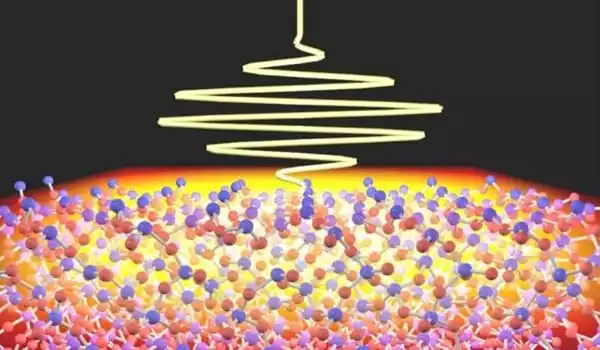Light-matter interactions are critical in spectroscopy, sensing, quantum information processing, and lasers. The majority of these applications believe light to be electromagnetic plane waves moving at the speed of light in vacuum. As a result, in quantum electrodynamics, light–matter interactions are typically viewed as very weak and captured at the lowest order.
Researchers have created a computational method for recreating atomic-scale interactions between matter and light. The researchers put their strategy to the test by simulating light-matter interactions in a thin film of amorphous silicon dioxide made up of over 10,000 atoms on the world’s fastest supercomputer, Fugaku. The proposed method is extremely efficient and might be utilized to investigate a wide range of phenomena in nanoscale optics and photonics.
Many significant technologies, such as lasers, light-emitting diodes (LEDs), and atomic clocks, are based on light-matter interactions. However, traditional computational tools for modeling such interactions are restricted in their utility and capabilities. Researchers in Japan have now discovered a strategy that overcomes these constraints.
A research team lead by the University of Tsukuba reveals a very efficient method for simulating light-matter interactions at the atomic scale in a report published this month in The International Journal of High Performance Computing Applications.
We discovered that our code is incredibly efficient, reaching the objective of one second per time step of the calculation that is required for practical applications. The performance is near to its maximum potential value, as determined by the computer memory bandwidth, and the code has the desirable attribute of excellent weak scalability.
Professor Kazuhiro Yabana
What is it about these interactions that makes them so challenging to simulate? One explanation is that the phenomena linked with the interactions cover a wide range of physics, including light wave propagation as well as the dynamics of electrons and ions in matter. Another explanation is because such occurrences can occur at a variety of length and time ranges.
Light-matter interactions are often studied using two independent computational methods due to the multiphysics and multiscale character of the problem. The first is electromagnetic analysis, which studies the electromagnetic fields of light; the second is a quantum-mechanical calculation of matter’s optical properties. However, these methods require that the electromagnetic fields are weak and that the length scale differs.

Professor Kazuhiro Yabana, the study’s principal author, adds, “Our approach gives a unified and enhanced way to simulate light-matter interactions.” “We accomplish this accomplishment by solving three key physics equations at the same time: the Maxwell equation for electromagnetic fields, the time-dependent Kohn-Sham equation for electrons, and the Newton equation for ions.”
The method was implemented in the researchers’ in-house software SALMON (Scalable Ab initio Light-Matter simulator for Optics and Nanoscience), and the simulation computer code was rigorously adjusted to maximize its performance. They then put the code to the test by simulating light-matter interactions in a thin film of amorphous silicon dioxide with over 10,000 atoms. This simulation was run on over 28,000 nodes of Fugaku, the world’s fastest supercomputer, at the RIKEN Center for Computational Science in Kobe, Japan.
Until now, we have only studied light traveling in a vacuum; this has served as the foundation for describing the effects of reflection, refraction, and transmission in a medium. These fundamentally passive events serve as a reminder that nothing is accomplished or learnt about light in the absence of material interaction. A broader field of study, however, is concerned with light actively coupling with matter – and many of the systems in which the photonic properties of light are most vividly visible involve matter in the form of atoms, molecules, or nanoparticles.
“We discovered that our code is incredibly efficient,” adds Professor Yabana, “reaching the objective of one second per time step of the calculation that is required for practical applications.” “The performance is near to its maximum potential value, as determined by the computer memory bandwidth, and the code has the desirable attribute of excellent weak scalability.”
Although the team simulated light-matter interactions in a thin layer in this work, their method might be utilized to investigate a wide range of phenomena in nanoscale optics and photonics.





